The origins of sculpture are as old as civilisation itself, rooted in the timeless human urge to capture form and spirit in the physical world. The earliest sculptures, created in the Paleolithic era, were small fertility idols and animal figures carved from stone or bone, reflecting the intersection of artistry with the spiritual and practical lives of ancient communities.
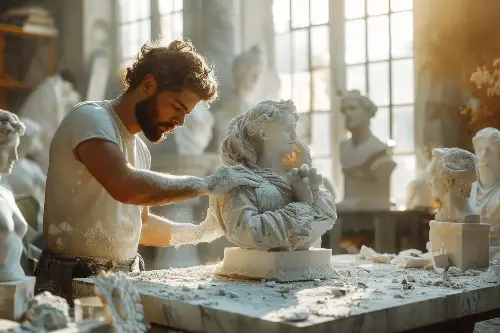
As civilisation advanced, so too did the sophistication of sculptural techniques. The ancient Egyptians, with their grand stone carvings, not only perfected the craft but also imbued their work with profound religious significance. In Egypt, statues of pharaohs were believed to be vessels for their ka, or life force, ensuring their survival in the afterlife.
Greek Mastery and the Human Form
Nowhere was the art of sculpture more highly evolved in antiquity than in ancient Greece. The Hellenistic period marked a zenith in the portrayal of the human form; from the poised Kouroi of the Archaic period to the dynamic and anatomically precise works of the Classical era, such as the Discobolus or the Venus de Milo. The Greeks pioneered techniques in both bronze and marble, capturing intricate details that went far beyond their earlier stiff, formal representations of the human figure. Their work signified a celebration of humanism and the physical form, laying the foundation for the Western sculptural tradition.
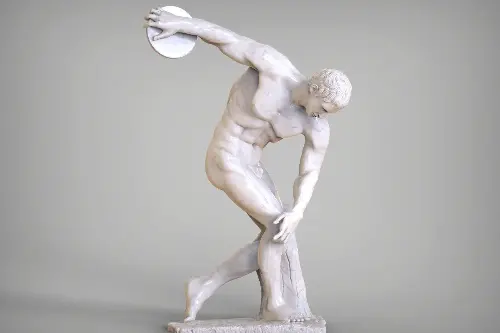
The Romans, too, furthered the art of sculpture, creating vivid portraits and major historical reliefs. The Romans borrowed heavily from Greek methodology but added their own touch by infusing portraits with a realism that captured even the imperfections of their subjects.
The Medieval Transformation of Sculpture
Aided by the spread of Christianity, the medieval period saw a seismic shift in the themes and purposes of sculpture. Roman techniques survived, but there was a transition to more religious subjects, culminating in the creation of large-scale works like those which adorned cathedrals. Gothic sculpture distinguished itself with its elongated figures and ornate detailing, a vivid contrast to the more robust forms of Romanesque figures that preceded them.
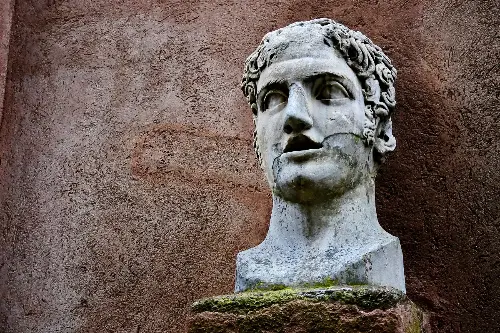
Sculpture in the Renaissance: A Return to Classicism
The Renaissance marked a return to the classical ideals of Greece and Rome. A renewed focus on humanism and naturalism took centre stage. Donatello, Michelangelo, and Bernini were among the titans who not only revived classical forms but also infused their work with a sense of vitality and motion; Michelangelo's David is emblematic of this era, both in technique and impact.

Baroque and Rococo: Dramatic Flair
In the Baroque period, sculpture took a dramatic, often theatrical direction, with artists like Gian Lorenzo Bernini leading the way. His works, such as 'The Ecstasy of Saint Teresa', are renowned for their dynamic compositions and intricate play of light and shadow, creating a sense of movement that had never before been seen in sculpture.
The Rococo period that followed favoured lighter, more playful themes, with an emphasis on elegance and ornamentation, representative of the decorative arts that dominated this period.
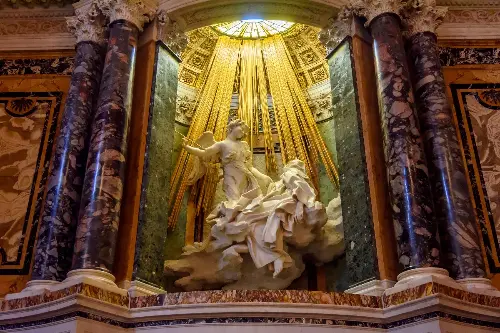
The Modern Sculpture Movement
As the world moved into modernity, so too did sculpture evolve with the changing times. Art Nouveau brought forth a marriage of artistic design and natural forms, which was soon overtaken by the Abstract and Cubist movements of the early 20th century. Artists like Picasso, who sought to break traditional boundaries, used sculpture to experiment with space, form, and perspective.
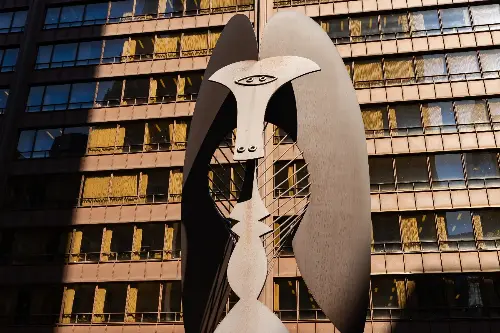
The Influence of Technology and New Materials
The 20th century also saw drastic changes in techniques and materials. The industrial revolution introduced metals like steel and aluminium, while the development of new tools and technology, such as welding, expanded possibilities. The use of plastics, concrete, and synthetic materials in the late 20th and 21st centuries continues to challenge and redefine what sculpture can be.
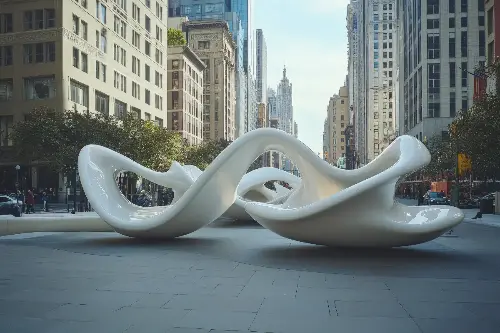
Sculpture Today: A Mosaic of Influences
The contemporary landscape of sculpture is a rich tapestry woven from myriad cultural threads. Today, sculptors draw inspiration from the full breadth of the art's long and varied history, while also engaging with current themes and experimenting with form and material. Public art installations and avant-garde museum pieces reflect our current existential concerns and a diverse society.
In the manifold expressions of modern sculpture, the enduring beauty of this ancient art form endures. Whether crafted from stone, metal, or cutting-edge composites, sculpture continues to evolve, while also reminding us of the unbroken thread that connects our time with that of our distant ancestors. Engaging, enigmatic, and ever-changing -- sculpture remains a profound testament to humanity's creative spirit.
